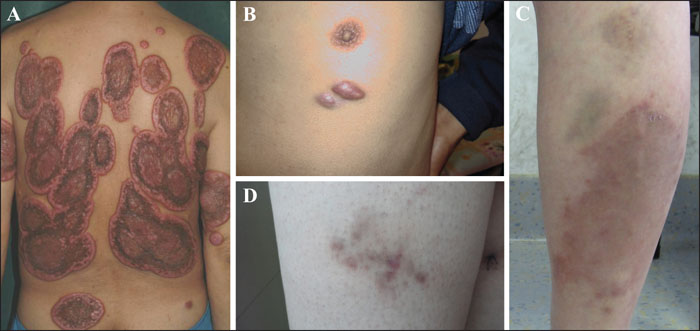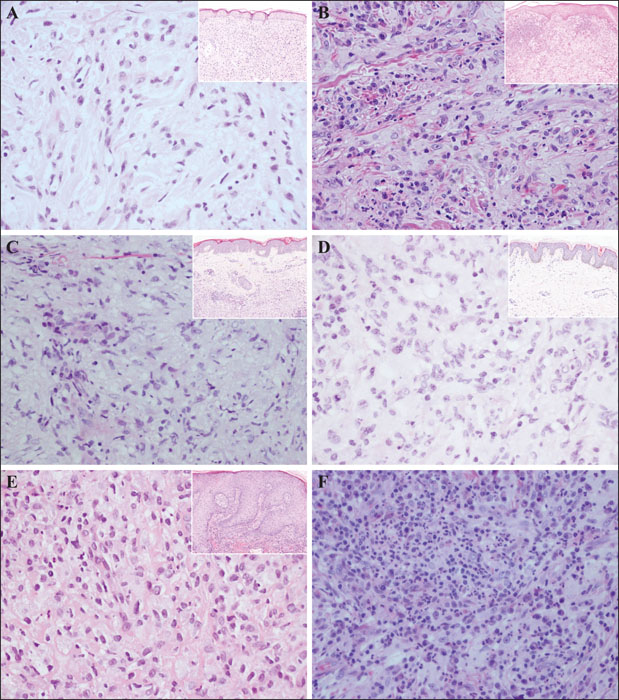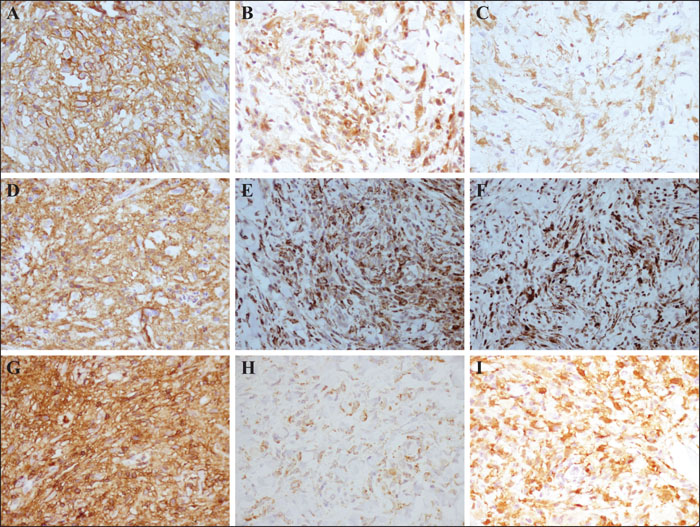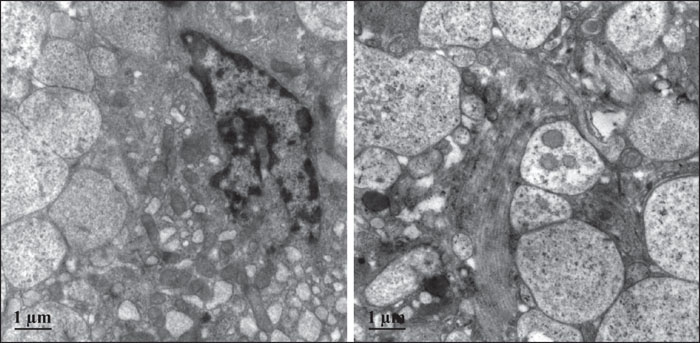European Journal of Dermatology
MENUUncommon cutaneous non-Langerhans cell histiocytosis arising from dermal dendritic cells in adults: a clinicopathological study of five cases Volume 30, numéro 1, January-February 2020
- Mots-clés : dermal dendritic cells, non-Langerhans cell histiocytosis, xanthogranuloma family, factor XIIIa
- DOI : 10.1684/ejd.2019.3679
- Page(s) : 32-40
- Année de parution : 2020
Background: Non-Langerhans cell histiocytosis (non-LCH) is a collective term that encompasses a long list of rare “histiocytosis” that do not meet the criteria for Langerhans cell histiocytosis (LCH). Among cutaneous non-LCH, the xanthogranuloma (XG) family represents a distinct group of disorders derived from dermal dendritic cells (DDCs) at different stages of differentiation. Objectives: To investigate the clinicopathological characteristics of the XG family in adults and review the relevant literature. Materials and Methods: We performed a retrospective clinicopathological study of five adult cases with a previous diagnosis of non-LCH. Clinicopathological features, immunophenotypes, genetic alterations and ultrastructural characteristics were analysed. Results: Skin biopsies revealed that all five cases were characterized by diffuse infiltration of polymorphic cells, which were immunoreactive to factor XIIIa but negative for Langerin, CD1a, and S100. None of the cases harboured the BRAF V600E mutation. Electron microscopy of two cases exhibited abundant cytoplasmic processes with numerous lysosome-like dense bodies and electron-lucent vesicles in the cytoplasm and extracellular matrix. The overall features suggested that DDCs are the cellular origin, and these cases fulfilled the criteria for the XG family. Conclusion: The XG family represents a spectrum of rare diseases with different clinical presentations, a wide range of morphological appearances, and a shared common origin (DDCs). This group of disorders has been proposed as a unique entity with diagnostic challenges that should not be underestimated.





